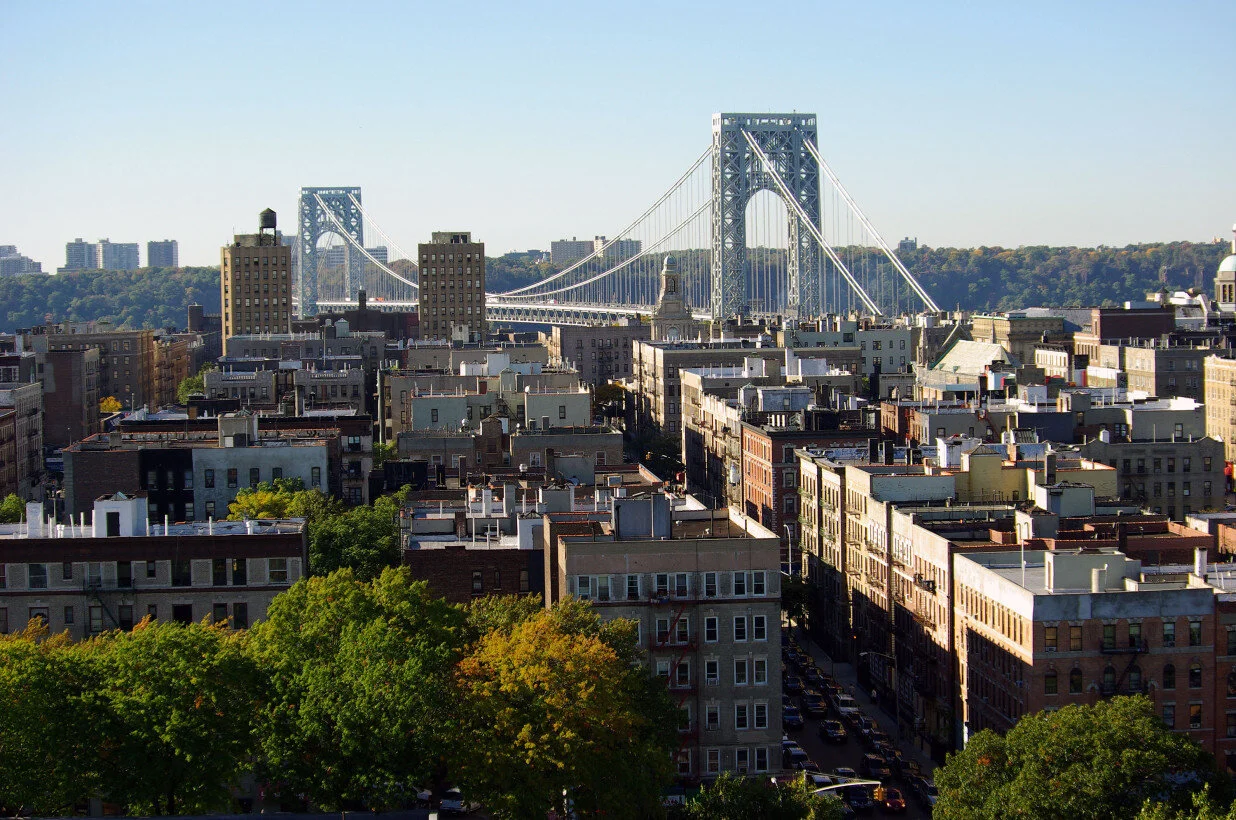WASHINGTON HEIGHTS: AS JAGGED AS ITS HISTORY, AS STRONG AS ITS FOUNDATIONS
WASHINGTON HEIGHTS: AS JAGGED AS ITS HISTORY, AS STRONG AS ITS FOUNDATIONS
Shutterstock
Washington Heights, a vibrant, predominantly Dominican neighborhood situated in northern Manhattan, boasts a rich topography of buildings, rivers and elevations, and was once home to a large German Jewish community. Bound by the Harlem river to the East and Hudson to the West, the Heights’ “sharp ridges, hilltop streets -- seem to mirror the precarity of the place in the built environment,” writes essayist, poet, translator Carina del Valle Schorske in The Ladder Up: A Restless History of Washington Heights.
While the Heights’ reputation warns its visitors to stay cautious, it’s communitarian spirit, hustler and “love thy neighbor” spirit runs rampant in the community.
“Despite negative media portrayals of Washington Heights,” Adrian D. Panjoja writes in Transnational Ties and Immigrant Political Incorporation: The Case of Dominicans in Washington Heights, New York, “the enclave has a culturally and economically vibrant community with Dominican grocery stores known as bodegas, restaurants, travel agencies, money transfer agencies, botanicas or stores selling folk remedies, hometown clubs, street vendors, and newspapers/magazine stands which carry several daily newspapers from the Dominican Republic (researcher's field notes).
Once referred to as the “Fort Tryon Area,” the “FrankFurt-on-the-Hudson” and then the “Astoria of Manhattan”, Washington Heights, was first home to German-Austrian Jewish community. It wasn’t until the mid 19th century that Washington Heights adopted its current name.
“Within the core area of Washington Heights (between 155th Street and Dyckman Street),” American historian Steven M. Lowenstein writes in Frankfurt on the Hudson: The German Jewish Community of Washington Heights, 1933-83, Its Structure and Culture, “there was a considerable internal difference as well. The further North and West one went, the more prestigious the neighborhood…”
According to Schorske, in 1950, the confluence of the two great migrations spilled over the streets of the Heights; African Americans fleeing from the south, and Hispanics catching state-subsidized flights to New York.
“New transportation technologies fueled the desperate exodus of country people from the hemisphere’s haunted plantations, unredeemed by the broken promises of Reconstruction and independence,” Schorske wrote.
By the 1970s, crime was rampant on the streets of Washington Heights, made even more dangerous by the introduction of crack cocaine in the 1980s according to Pantoja.
As New York’s cocaine headquarters in the 1980s, Washington Heights became a hub of commodities for marginalized communities.
“Washington Heights was and remains a commercial center, not just for drugs, but for bodegas and beauty shops, for bootleg DVDs and sneakers and sew-ins and fishnets and bedsheets.”
Schorske says, “ This was not the inner city as desolation, but the inner city as Oya’s marketplace at the gates of the cemetery. The neighborhood inscribed its history in me as a long caravan of commodities.”
Washington Heights has come a long way from its drug-addled past. Members of the community have struggled and come together to create a safer neighborhood for themselves, their children and their elders.
Made up mostly of the working and middle class, “there is a good deal here about pride of place,” Snyder writes ,“...how people struggle and get along and get by day to day in sometimes adverse circumstances, and about how communities are built, and rebuilt, by determined individuals.”
The Heights is known for its resilience, self-reliance and sense of community.
“The underlying theme is resilience, bouncing back after adversity, and continually striving, sometimes against the odds, to improve social and economic conditions.” Snyder says, “ Much of the story is about differences and divisions but “even though the people never found ‘unity,’ they did find ways to work together often enough to make a significant difference in the welfare of their neighborhood”
Snyder adds, “The strength of Washington Heights . . . lay in its ability to confront–and sometimes to overcome–problems that wracked cities in the late twentieth century.”
